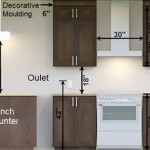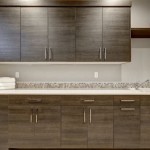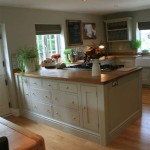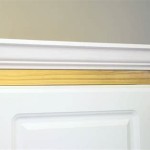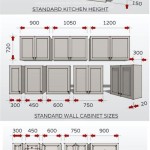Selecting the Optimal Paint for Kitchen Cabinets
Kitchen cabinets, subjected to daily use and exposure to moisture, grease, and varying temperatures, require a durable and aesthetically pleasing finish. Choosing the appropriate paint is paramount to achieving a long-lasting and visually appealing result. The selection process involves considering factors such as paint type, durability, ease of application, and desired aesthetic. This article will explore the various paint types suitable for kitchen cabinets, highlighting their advantages and disadvantages to inform a well-considered decision.
The finish on kitchen cabinets is more than just a decorative layer; it serves as a protective barrier against the elements and the rigors of daily use. A poorly chosen paint can quickly chip, peel, or fade, leading to a worn and unappealing appearance. Conversely, a well-selected paint, properly applied, can enhance the beauty of the kitchen and extend the lifespan of the cabinets.
Understanding Different Paint Types
Several paint types are commonly used for kitchen cabinets, each possessing unique characteristics that make it suitable for different applications and preferences. These include latex paints, oil-based paints, alkyd paints, lacquer, and specialized cabinet paints.
Latex Paints: Latex paints are water-based coatings known for their ease of application, low odor, and relatively quick drying time. They offer good color retention and are generally more environmentally friendly than oil-based options due to their lower volatile organic compound (VOC) content. Latex paints are also easier to clean up, requiring only soap and water.
However, latex paints may not provide the same level of hardness and durability as oil-based paints, making them potentially more susceptible to scratches and chipping, especially in high-traffic areas like kitchen cabinets. To mitigate this, it is crucial to use a high-quality latex paint specifically formulated for cabinets and to apply a durable clear coat for added protection.
Oil-Based Paints: Oil-based paints, also known as alkyd paints, offer excellent durability and a smooth, hard finish. They are resistant to scratches, chipping, and stains, making them a popular choice for high-use surfaces like kitchen cabinets. Oil-based paints also tend to level well, minimizing brushstrokes and providing a professional-looking finish.
Despite their durability, oil-based paints have several drawbacks. They contain high levels of VOCs, contributing to air pollution and requiring careful ventilation during application. They also have a longer drying time compared to latex paints and require the use of mineral spirits or paint thinner for cleanup. Over time, oil-based paints can yellow, especially in areas with limited sunlight exposure, potentially affecting the cabinet's aesthetic appearance.
Alkyd Paints (Water-Based): These paints attempt to combine the benefits of both latex and oil-based paints. They are water-based but contain alkyd resins, providing improved durability and leveling compared to traditional latex paints. They also offer lower VOC content than oil-based paints, making them a more environmentally friendly option.
Water-based alkyd paints are a good compromise for individuals seeking a durable finish with the ease of application and cleanup associated with latex paints. However, they might not achieve the same level of hardness and solvent resistance as traditional oil-based paints.
Lacquer: Lacquer is a solvent-based finish that dries quickly to a very hard and durable surface. It is often used in professional cabinet shops due to its ability to produce a smooth, factory-like finish. Lacquer is highly resistant to scratching and chipping, and it is available in a wide range of sheens.
However, lacquer application typically requires specialized equipment, such as a spray gun, and a well-ventilated area due to the high concentration of VOCs. It is also more challenging to repair than other types of paint. Lacquer is generally not recommended for DIY projects without proper experience and equipment.
Specialized Cabinet Paints: Several paint manufacturers offer paints specifically formulated for kitchen cabinets. These paints are designed to provide excellent adhesion, durability, and resistance to common kitchen hazards. They often include features like self-priming properties and enhanced leveling capabilities.
While specialized cabinet paints may be more expensive than standard paints, they can provide superior performance and a longer-lasting finish. It is advisable to research and compare different brands and products to determine the best option for specific needs and budget.
Factors Influencing Paint Selection
Choosing the right paint type involves considering several factors specific to the kitchen environment and the desired outcome. These factors include the existing cabinet finish, the desired level of durability, application method, and budget constraints.
Existing Cabinet Finish: The type of existing finish on the cabinets significantly impacts the preparation required and the compatibility of the new paint. For instance, if the cabinets have a glossy finish, they need to be properly sanded and primed to ensure proper adhesion of the new paint. An oil-based paint may adhere better to an existing oil-based finish than a latex paint, whereas a latex paint typically requires a primer for optimal adhesion to previously painted surfaces.
It is crucial to thoroughly clean and degrease the cabinets before sanding to remove any contaminants that could interfere with paint adhesion. Depending on the existing finish, stripping the cabinets down to bare wood may be necessary for optimal results.
Desired Durability: The level of durability required depends on the frequency of use and the level of exposure to moisture, grease, and other kitchen hazards. For high-traffic kitchens or cabinets near the stove or sink, a more durable paint, such as an oil-based paint or a specialized cabinet paint, is recommended. For less demanding environments, a high-quality latex paint with a durable clear coat may suffice.
Selecting a paint with good stain resistance is also important for kitchen cabinets. Paints with a tight molecular structure are less likely to absorb stains from food spills or grease splatters.
Application Method: The application method, whether brushing, rolling, or spraying, can influence the type of paint selected. For brushing and rolling, paints with good leveling properties are essential to minimize brushstrokes and roller marks. Spraying generally provides the smoothest finish, but it requires specialized equipment and a well-ventilated area. Lacquer is almost exclusively applied via spraying.
Consider the skill level of the individual applying the paint. Some paints, like lacquer, require a high level of expertise to achieve a professional-looking finish. Other paints, like latex paints, are more forgiving and easier to apply for DIY projects.
Budget Constraints: The cost of paint can vary significantly depending on the type, brand, and quality. Oil-based paints and specialized cabinet paints tend to be more expensive than standard latex paints. However, investing in a higher-quality paint can often be more cost-effective in the long run due to its increased durability and longevity.
Factor in the cost of other necessary supplies, such as primer, brushes, rollers, sandpaper, and cleaning solutions. Creating a comprehensive budget will help make an informed decision and avoid unexpected expenses.
Preparing Cabinets For Painting
Proper preparation is crucial for achieving a professional-looking and long-lasting paint job on kitchen cabinets. This process involves cleaning, sanding, priming, and repairing any imperfections.
Cleaning: Before any other steps, cabinets must be thoroughly cleaned to remove grease, dirt, and other contaminants. A degreasing cleaner specifically designed for kitchen cabinets is recommended. For stubborn stains, a mild abrasive cleaner may be used, but care should be taken to avoid scratching the finish. Rinse the cabinets thoroughly with clean water and allow them to dry completely before proceeding.
Sanding: Sanding creates a slightly rough surface, allowing the paint to adhere properly. Use a medium-grit sandpaper (around 120-150 grit) to lightly sand the entire surface of the cabinets. Pay particular attention to areas with a glossy finish. After sanding, wipe the cabinets with a tack cloth to remove any sanding dust.
Priming: Primer serves as a bonding agent between the existing surface and the new paint. It also helps to seal porous surfaces and prevent stains from bleeding through. Apply a high-quality primer specifically designed for cabinets, following the manufacturer's instructions. Allow the primer to dry completely before applying the paint.
Repairing Imperfections: Before priming, inspect the cabinets for any imperfections, such as dents, scratches, or cracks. Fill these imperfections with wood filler and sand smooth once dry. This ensures a smooth and even surface for painting.
By meticulously following these preparation steps, a solid foundation for a successful paint job is established, leading to a more durable and visually appealing result.

How To Paint Kitchen Cabinets In 7 Simple Steps

How To Paint Kitchen Cabinets In 7 Simple Steps

How To Paint Kitchen Cabinets

The Best Kitchen Cabinet Paint Brand Honest Review

How To Paint Kitchen Cabinets In 7 Simple Steps

Best Paint For Cabinets 2024 24 Brands Blind Tested Reviewed

How To Paint Kitchen Cabinets A Step By Guide Confessions Of Serial Do It Yourselfer

Avoid These Mistakes How To Paint Cabinets That Are Already Painted Grace In My Space

Best Paint For Cabinets 2024 24 Brands Blind Tested Reviewed

How To Paint Kitchen Cabinets
Related Posts


